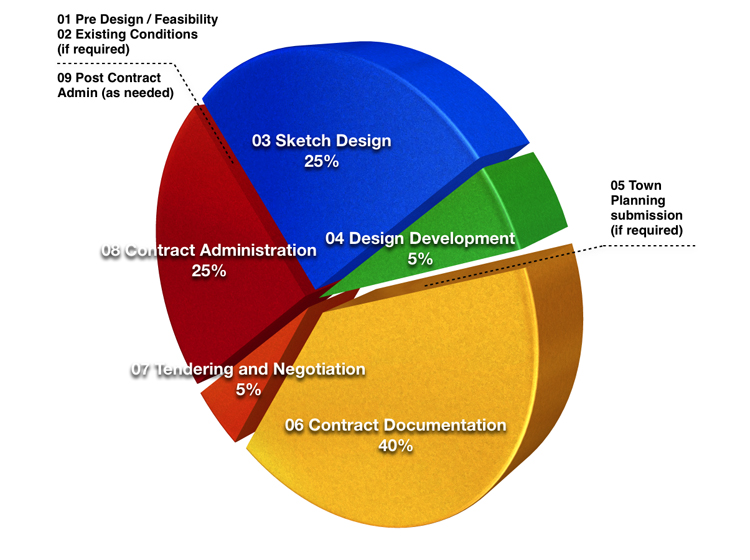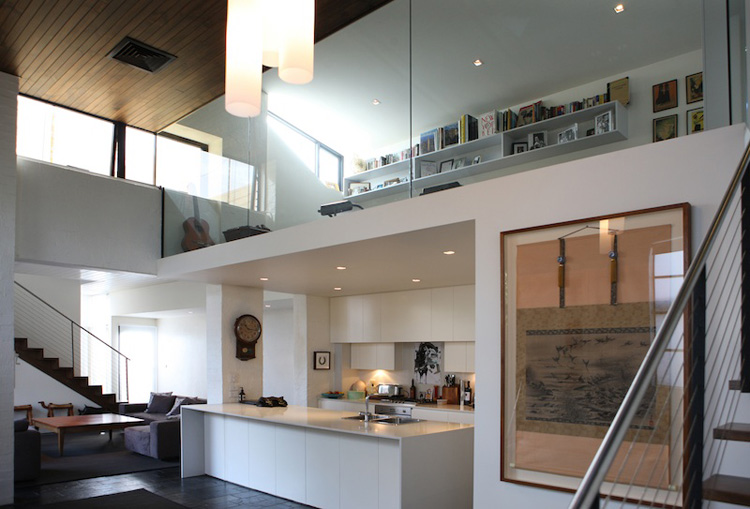
We are often asked what services are required to build a new project and which of these services we can provide. The short answer is we can do everything; for the longer answer, read on.
Architectural services generally comprise five core sequential stages – Sketch Design, Design Development, Contract Documentation, Tendering & Negotiations and Contract Administration. The same core services apply to any type of project, be it a small residential extension or a multi-storey office building. The amount of work and time typically involved in each core phase of the architectural services process is indicated in the diagram above and summarised below:
Sketch Design involves the preparation of design ideas that address the client’s brief and relevant local authority requirements. We start working on the form of the building and also get a handle on the opportunities and constraints of the site. Basically, these are early concepts and plans of the internal and external spaces, kitchens, bathrooms, hallways, parking and so on.
Design Development involves developing the design to a level that will adequately show the client what they will get at the end of the project. Also, it meets any town planning requirements for assessment of the proposal. If planning approval is not required, it enables assessment of building regulations terms. This stage also moves inside the structure and begins design work on the interiors, with cabinetry and finishes.
Contract Documentation is the preparation of detailed drawings and specifications to allow the project to go out to tender and to obtain building approval.
Tendering & Negotiations are usually required for a standard project. We assist in selecting the list of suitable builders from whom to obtain tenders. We then assess their submissions and negotiate with the preferred builder up to the point where you can sign contracts. If you already have a builder in mind at the outset of your project, the extent of these services may be reduced.
Contract Administration involves administration of the building contract up to and including practical completion. It includes oversight of progress and assisting with resolution of any issues during the construction period.
Also shown in the diagram above are some non-core services which may or may not be required depending on the site, location (council, state or country) and type of project.
Pre Design Feasibility may be required at the beginning to see if your project is viable. Some clients come to us before they have purchased a site or begun a feasibility assessment. Other clients may have more experience and do their own feasibility. Either way we are happy to guide you through this process.
Existing Conditions involves measuring up the existing building and other improvements on the site. It is only required for renovations or fit-outs; greenfield projects do not require this stage.
Town Planning (known as a Development Application in NSW) is only required for some sites. At the beginning of every project we will assess the site and let you know if this is required.
Post Contract Administration involves services after completion where we follow up on any potential defects. This stage is usually minimal and typically done on an as needed basis.
Beyond this, additional services are available including selection of furniture, soft furnishing, artwork and other styling depending on the client’s needs.
As you can see, there are several stages involved with any project irrespective of its size and scope. Utilising architectural services will provide you with the desired end product along with many checks and balances along the way. Generally, we prefer to provide full services to our clients so we can see the project through from start to finish and ensure you get the best outcome.
Feel free to contact us to discuss your project in detail so we can determine the scope of services best suited to you. We can also provide a fuller description of each stage and the deliverables.



